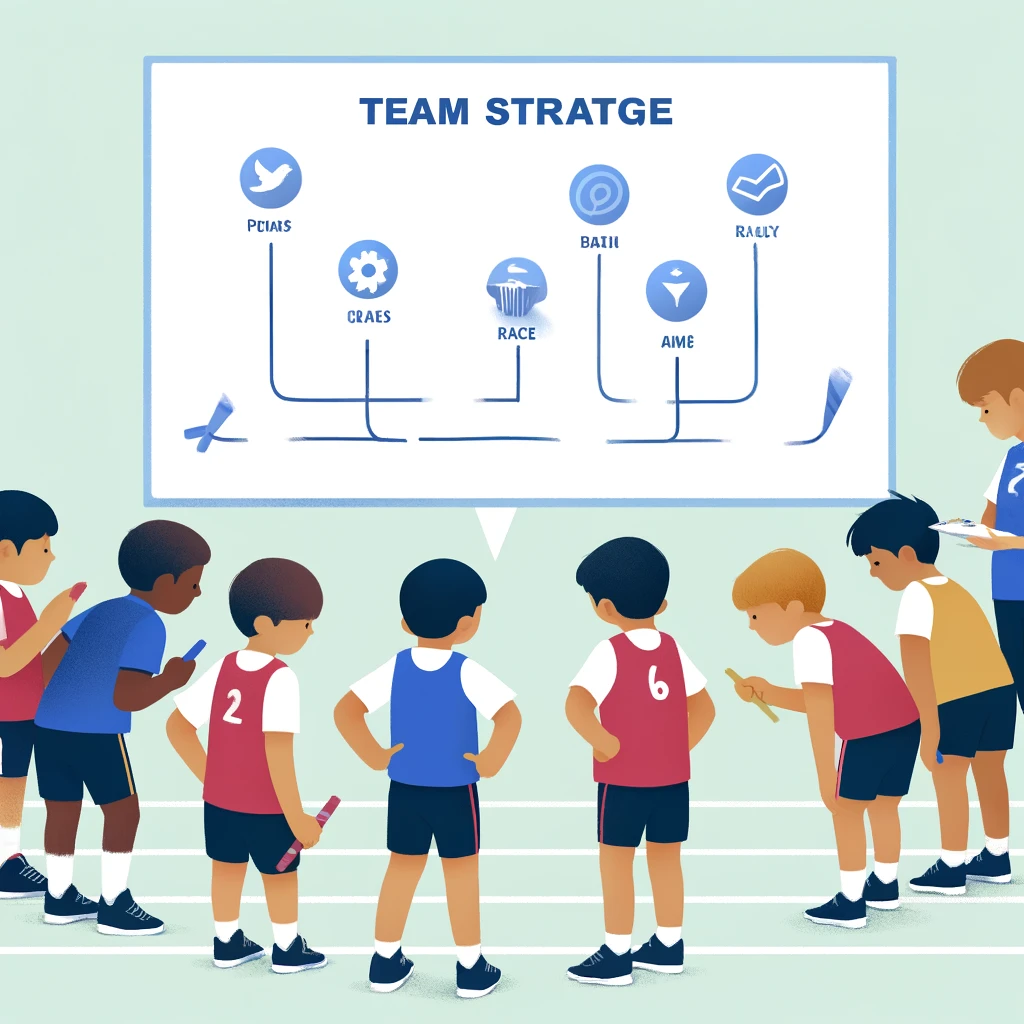Fostering Team Spirit and Collaboration in Kids
The relay race, a staple of school sports days and community events, is more than just a physical activity; it’s a dynamic platform for nurturing teamwork and cooperative skills among children. This blog delves into the essence of relay races and how they can be effectively used to cultivate a sense of unity, strategic thinking, and collective effort in young participants.
Understanding the Relay Race
A relay race involves teams of participants taking turns to complete a portion of the racecourse, passing a baton from one runner to the next. The success of the team relies not only on individual speed but also on the seamless transition of the baton, underscoring the importance of teamwork and coordination.
Organizing a Successful Relay Race
To create a meaningful and educational relay race experience, planning and organization are key. Here are some steps to consider:
Team Formation: Assemble teams with a balanced mix of abilities, ensuring each child can contribute meaningfully. This encourages inclusivity and teaches children to value diverse skills and strengths.
Understanding Roles: Explain to the children their roles within the team and the significance of each part they play in the race. This clarity helps them understand the interconnectedness of their efforts.
Practicing Transitions: Focus on the baton-passing technique during practice sessions. Smooth transitions are crucial and can be the deciding factor in a relay race, emphasizing the need for teamwork and precision.
Building Strategy: Encourage teams to discuss and develop strategies for their race. This process enhances their problem-solving skills and promotes strategic thinking.

The Educational Benefits of Relay Races
Participating in relay races has multiple cognitive and social benefits for children:
Enhancing Communication: Team members must communicate effectively to coordinate their actions, especially during baton exchanges, fostering verbal and non-verbal communication skills.
Promoting Teamwork: Success in a relay race is a collective effort. This environment teaches children the value of working together towards a common goal.
Developing Leadership Skills: Relay races provide opportunities for natural leaders to emerge and guide their teams, encouraging leadership and initiative.
Boosting Confidence: Being part of a team and contributing to its success can significantly enhance a child’s self-esteem and sense of belonging.
Teaching Sportsmanship: Learning to win graciously and lose with dignity is an important life lesson imparted through relay races.

Making Relay Races More Inclusive and Educational
To maximize the educational impact of relay races, consider the following enhancements:
Incorporate Varied Tasks: Beyond running, include stations where teams must complete puzzles, answer trivia, or perform tasks. This variation makes the race more inclusive and intellectually stimulating.
Use of Themed Baton: To add educational value, use batons related to different subjects (like a math ruler, a historical artifact, or a science model) and share related facts at each transition point.
Reflective Sessions: Post-race discussions about what went well and what could be improved help children internalize the lessons learned, promoting critical thinking and self-reflection.
More Than Just a Race
Relay races are a powerful tool for teaching children the importance of teamwork, strategic planning, and effective communication. These races go beyond physical activity; they are a microcosm of collaborative effort and shared achievement. By incorporating relay races into educational settings or community activities, we can provide children with a fun, active, and meaningful way to develop essential life skills that will benefit them both in and out of the sporting arena.
In sum, the Relay Race Rendezvous is not just about crossing the finish line; it’s about building bridges of cooperation, crafting strategies for shared success, and, most importantly, enjoying the journey together.




